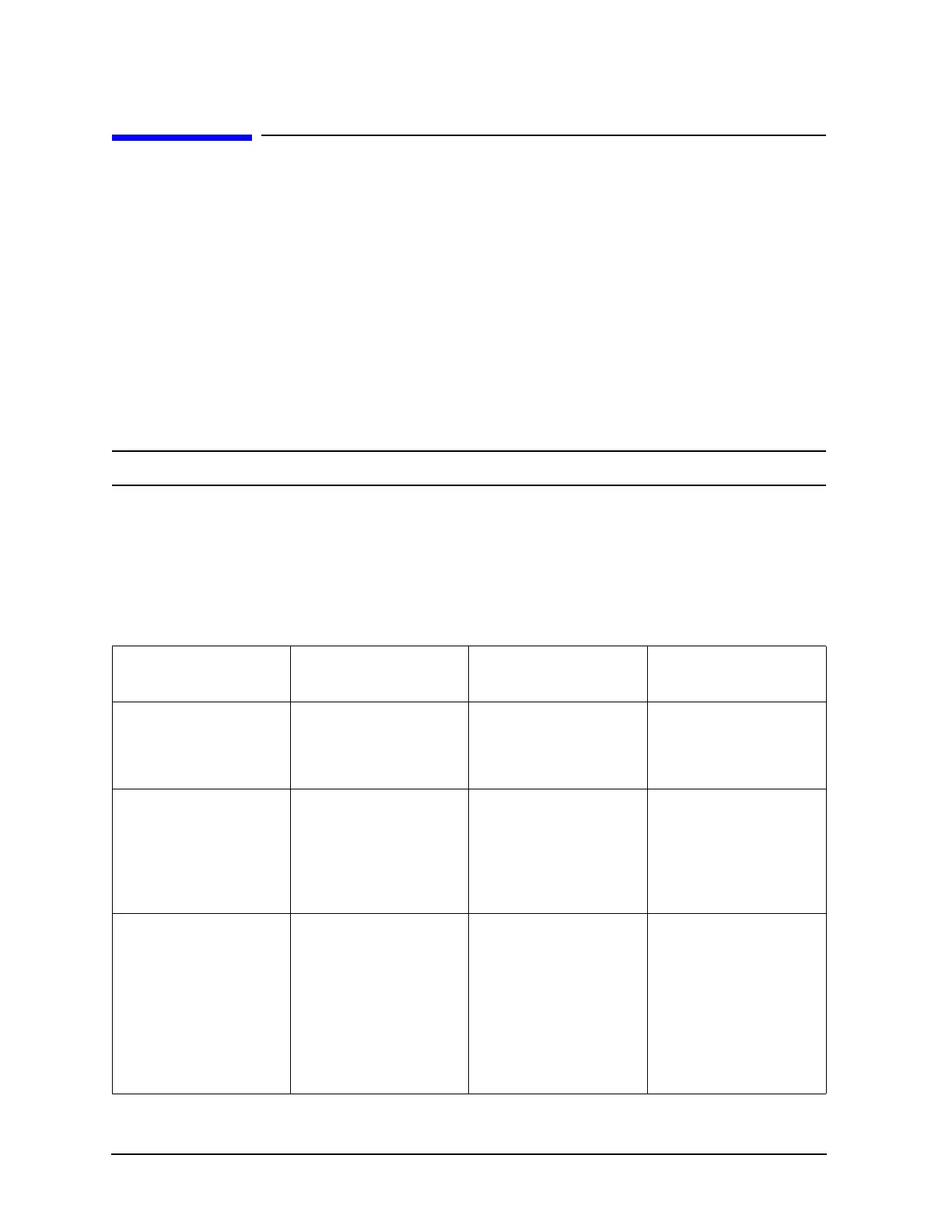6-10
Calibrating for Increased Measurement Accuracy
Procedures for Error Correcting Your Measurements
Procedures for Error Correcting Your Measurements
This section has example procedures or information on the following topics:
• frequency response correction
• frequency response and isolation correction
• enhanced frequency response correction (with enhanced reflection error correction)
• one-port reflection correction
• full two-port correction (ES analyzers only)
• TRL*/LRM* correction (ES analyzers only)
• power meter measurement calibration procedure
NOTE If the channels are uncoupled, you must make a correction for each channel.
Types of Error Correction
Several types of error correction are available that remove from one to twelve systematic errors. The full
2-port correction effectively removes all twelve correctable systematic errors. Some measurements do not
require correction for all twelve errors.
Ta b le 6- 2 explains each correction and its uses.
Table 6-2 Purpose and Use of Different Error Correction Procedures
Correction Procedure Corresponding
Measurement
Errors Corrected Standard Devices
Response Transmission or reflection
measurement when the
highest accuracy is not
required.
Frequency response. Thru for transmission,
open or short for
reflection.
Response & Isolation Transmission of high
insertion loss devices or
reflection of high return
loss devices. Not as
accurate as 1-port or
2-port correction.
Frequency response plus
isolation in transmission
or directivity in reflection.
Same as response plus
isolation standard. (load)
Enhanced Response and
Enhanced Reflection
Transmission or reflection
measurement when
improved accuracy is
desired. Not as accurate
as 2-port calibration.
Directivity, source match,
and frequency response
for reflection. Frequency
response, source match,
and isolation for
transmission. Enhanced
reflection corrects for load
match on bilateral
devices.
Short, open, load, and thru
or ECal module.

